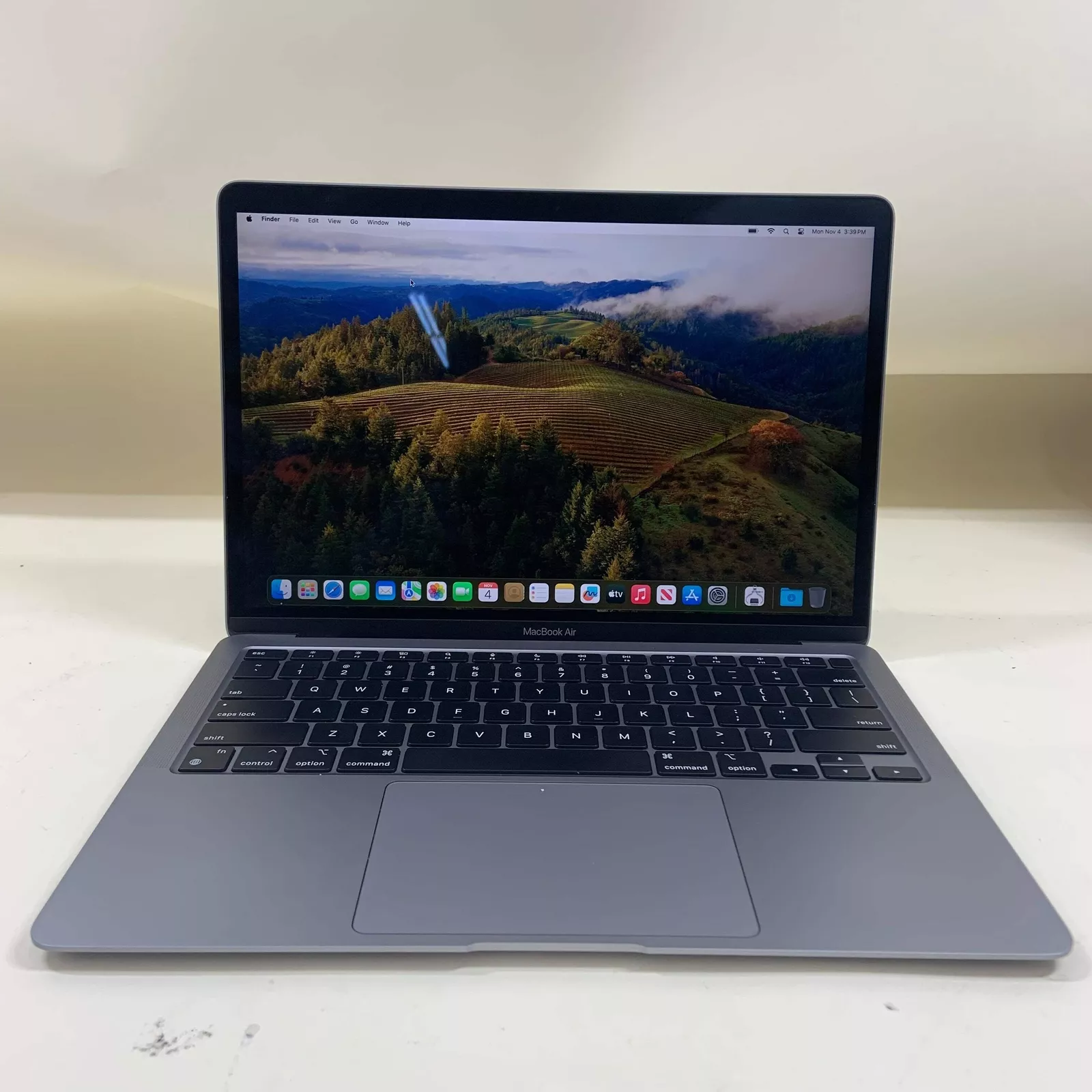MacBook speakers not working can be frustrating. You rely on your device for work, entertainment, and communication. When sound fails, it affects your productivity and enjoyment.
To fix MacBook speaker issues, first check your sound settings. Open System Settings, click Sound, and select Internal Speakers as the output device. Make sure the volume is up and not muted. If this doesn’t work, try restarting your Mac or resetting the NVRAM.
Sometimes external devices cause conflicts. Unplug headphones and other audio equipment. Check for software updates that might resolve audio bugs. If problems persist, run Apple Diagnostics to check for hardware issues.
| Common Causes | Quick Fixes |
|---|---|
| Wrong output | Select internal speakers |
| Volume issues | Adjust volume, unmute |
| Software bugs | Update macOS |
| Hardware problems | Run diagnostics |
Here’s a breakdown of common causes and fixes:
1. The Obvious Checks:
- Volume: Sounds simple, but make sure your volume isn’t muted or turned down too low. Use the F10, F11, and F12 keys to adjust.
- App Volume: Some apps have their own volume controls. Check the app you’re using (Music, Safari, etc.) to ensure it’s not muted.
- Mute Button: Double-check you haven’t accidentally hit the mute button (usually F10).
2. External Devices:
- Disconnect: Unplug any headphones, external speakers, or anything connected to your headphone jack or USB ports. Sometimes your Mac gets confused and tries to send audio to a device that’s no longer there.
- Bluetooth: Turn off Bluetooth to make sure you’re not accidentally connected to a wireless speaker you don’t realize is on.
3. Sound Settings:
- Output Device:
- Go to Apple menu > System Settings (or System Preferences) > Sound.
- Click the Output tab.
- Make sure “MacBook Speakers” (or similar) is selected.
- Mute Check: In the Sound settings, ensure the “Mute” checkbox is not selected.
- Volume Slider: Drag the “Output volume” slider to the right to increase the volume.
4. Restart Your Mac:
- A classic fix! Sometimes a simple restart can resolve software glitches that might be affecting your speakers.
5. Software Updates:
- macOS: Make sure your macOS is up to date. Go to Apple menu > System Settings (or System Preferences) > Software Update to check.
- App Updates: Ensure the apps you’re using are also up to date.
6. Advanced Troubleshooting:
- NVRAM Reset (for Intel Macs): If you have an Intel-based Mac, resetting the NVRAM (Non-Volatile RAM) can sometimes help. You’ll need to look up the specific instructions for your Mac model on Apple’s website.
- Safe Mode: Starting your Mac in Safe Mode can help diagnose if a third-party app or software is causing the issue. Again, you can find instructions for this on Apple’s support site.
7. Hardware Issues:
- If all else fails, it’s possible there’s a hardware problem with your speakers. In this case, you’ll need to contact Apple Support or take your MacBook to an authorized repair center.
Important Notes:
- Apple Support: Apple has excellent support resources online and by phone. Don’t hesitate to reach out to them for further assistance.
- Warranty: If your MacBook is still under warranty, any hardware repairs should be covered.
Initial Troubleshooting Steps
When your MacBook speakers stop working, a few quick checks can often resolve the issue. These steps address common audio problems without requiring technical expertise.
Check Sound Settings and Volume Controls
Start by verifying your Mac’s sound settings. Open System Settings from the Apple menu and click Sound. Select the Output tab and ensure Internal Speakers are chosen. Check that the output volume isn’t muted or set too low.
Adjust the volume slider to increase sound levels. Test audio using different apps to rule out software-specific issues.
Examine the physical volume buttons on your MacBook keyboard. Press F12 to increase volume. If you see a circle with a line through it, your Mac is muted. Press F10 to unmute.
Look for any external devices connected to your MacBook. Unplug headphones or speakers from the audio jack. Your Mac might be routing sound to these instead of internal speakers.
Restart Your Mac to Resolve Audio Issues
A simple restart can fix many audio problems. This process clears temporary files and resets system processes that might be causing speaker malfunctions.
To restart:
- Click the Apple menu
- Select Restart
- Wait for your Mac to fully reboot
After restarting, test your speakers again. Play a song or video to check if the issue is resolved.
If audio issues persist, try a more thorough restart. Shut down your Mac completely, unplug the power cord, wait 15 seconds, then plug it back in and turn on your computer.
Update macOS for Latest Audio Drivers
Outdated software can cause audio problems. Updating your macOS ensures you have the latest audio drivers and fixes for known issues.
To update:
- Open System Settings
- Click General
- Select Software Update
- Install any available updates
| Update Type | Benefits |
|---|---|
| macOS Update | Comprehensive system improvements, including audio fixes |
| Security Update | Patches that may affect audio system stability |
| Supplemental Update | Targeted fixes for specific issues, potentially audio-related |
After updating, restart your Mac to apply changes. Test your speakers again to see if the update resolved the audio problem.
If these steps don’t work, you may need to reset the NVRAM or PRAM, which store audio settings. More complex issues might require professional assistance.
Advanced Solutions for Audio Problems
When basic troubleshooting fails to resolve MacBook speaker issues, more advanced techniques can help. These methods address deeper system problems and leverage built-in diagnostic tools.
Reset NVRAM to Fix Sound Settings
NVRAM (Non-Volatile Random-Access Memory) stores critical system settings, including audio configurations. Resetting it can solve persistent sound problems.
To reset NVRAM:
- Shut down your MacBook
- Press the power button
- Immediately hold Command + Option + P + R
- Keep holding until you hear the startup sound twice
This process clears stored audio settings and restores defaults. After the reset, check your sound preferences to ensure proper output device selection.
If issues persist, move on to the next steps.
Manage Audio Processes in Activity Monitor
Activity Monitor lets you view and control running processes, including those related to audio.
To manage audio processes:
- Open Activity Monitor from Applications > Utilities
- In the search bar, type “coreaudiod”
- Select the process and click the “X” to force quit
This action restarts the core audio daemon, potentially resolving glitches. If problems continue, look for other audio-related processes and restart them similarly.
| Process Name | Function |
|---|---|
| coreaudiod | Core audio daemon |
| AudioComponentRegistrar | Manages audio components |
| audiod | Audio server process |
Utilize Apple’s Built-In Diagnostics
Apple Diagnostics can identify hardware issues affecting audio output.
To run diagnostics:
- Shut down your MacBook
- Press the power button
- Immediately hold the D key
- Release when you see the diagnostic screen
Follow on-screen instructions to complete the test. If hardware problems are detected, note the reference codes. These codes help Apple Support diagnose and resolve issues more efficiently.
For software-related audio problems not solved by these steps, consider updating or reinstalling macOS.
External and Internal Speaker Issues
MacBook speaker problems can occur with both built-in and external audio devices. Identifying the source and adjusting settings are key steps to resolve these issues.
Distinguish Between Built-In and External Speakers
To pinpoint speaker issues, first determine if the problem affects your MacBook’s built-in speakers or external audio devices. Unplug any external speakers or headphones from your MacBook.
Test the internal speakers by playing audio. If you hear sound, the issue likely lies with your external devices.
For external speakers, check physical connections and power sources. Ensure cables are secure and the speakers are turned on.
If built-in speakers aren’t working, check your Mac’s sound settings. Look for the internal speakers in the output options.
Configure Audio Settings for Different Speakers
Proper configuration of audio settings is crucial for both internal and external speakers. Open System Settings and navigate to the Sound section.
In the Output tab, you’ll see a list of available audio devices. Select the correct output device for your needs.
Adjust the balance and output volume sliders to fine-tune your audio experience. If using external speakers, ensure they’re selected as the output device.
For persistent issues, try restarting your Mac or resetting the PRAM/NVRAM. These steps can resolve many audio-related problems.
Explore Audio Interface and USB Speaker Solutions
When built-in or basic external speakers don’t meet your needs, consider USB speakers or an audio interface. These options can provide improved sound quality and more control.
USB speakers offer plug-and-play simplicity. They bypass your Mac’s internal audio system, potentially resolving driver-related issues.
An audio interface provides professional-grade sound and multiple input/output options. It’s ideal for music production or high-quality audio work.
| Solution | Pros | Cons |
|---|---|---|
| USB Speakers | Easy setup, bypasses internal audio | Limited audio quality |
| Audio Interface | High-quality sound, multiple I/O | More complex, costlier |
When choosing, consider your audio needs and budget. USB speakers suit casual use, while an interface is better for audio professionals.
Using Applications to Test and Resolve Sound Problems
Mac apps can help pinpoint and fix audio issues. These built-in tools offer ways to test your speakers and adjust settings.
Record and Playback in Voice Memos
Voice Memos is a quick way to check your Mac’s audio input and output. Open the app and click the red record button. Speak into your microphone for a few seconds, then stop the recording.
Play back what you recorded. If you hear your voice, your speakers are working. No sound? Check the output device in Sound preferences.
Try adjusting the volume slider in Voice Memos. Still no luck? Move on to the next app to isolate the problem.
Test Audio Playback in QuickTime
QuickTime Player offers another method to test your Mac’s audio. Open the app and choose File > New Audio Recording. You don’t need to record anything.
Look for the volume meter next to the record button. It should move when you speak. If it doesn’t, your mic may be the issue.
Click the arrow next to the record button to select your audio input and output devices. Try different options to see if sound returns.
Troubleshoot with GarageBand Settings
GarageBand is powerful for diagnosing audio problems. Open the app and create a new project. Add a Software Instrument track.
Play some notes on the on-screen keyboard. No sound? Open GarageBand > Settings > Audio/MIDI.
Check these settings:
- Input Device
- Output Device
- Buffer Size
Try different combinations. A larger buffer size may help if you hear crackling. Restart the Core Audio API if issues persist.
| Setting | Purpose | Try This |
|---|---|---|
| Input Device | Selects mic | Choose built-in mic |
| Output Device | Picks speakers | Select internal speakers |
| Buffer Size | Affects latency | Increase if audio crackles |
Frequently Asked Questions
MacBook speaker issues can arise from various causes. The following questions address common problems and solutions for troubleshooting audio output on your device.
Why do my MacBook speakers produce no sound after a software update?
Software updates can sometimes affect audio settings. Check your sound output settings to ensure the correct output device is selected. Restart your MacBook to apply any pending changes.
What steps should be followed to reset the sound on a MacBook?
To reset sound on your MacBook:
- Open System Settings
- Click Sound
- Select Output
- Choose Internal Speakers
- Adjust volume slider
- Restart your MacBook
These steps often resolve basic audio issues.
How can one troubleshoot when the MacBook Air’s speakers fail to produce audio, yet headphones function properly?
Check if your MacBook recognizes the internal speakers. Ensure no other audio devices are connected. Reset the NVRAM and SMC if the problem persists.
What could be causing the internal speakers to not appear in the sound settings of a MacBook?
Internal speakers may not appear due to software glitches or hardware issues. Try these steps:
- Update macOS
- Reset NVRAM
- Reset SMC
- Run Apple Diagnostics
If problems continue, contact Apple Support.
How can the issue of a MacBook Pro’s speakers not working be addressed?
To fix MacBook Pro speakers:
- Check volume settings
- Restart your MacBook
- Update macOS
- Reset NVRAM and SMC
- Check for physical damage
Persistent issues may require professional repair.
My MacBook speakers aren’t working, but my headphones are. What can I do?
This is a common issue. Here’s a breakdown of troubleshooting steps:
- Check the Basics:
- Volume: Ensure the volume isn’t muted or set extremely low. Use the F11 and F12 keys.
- Output Device: Go to System Settings (or System Preferences on older macOS) > Sound > Output. Make sure “Internal Speakers” is selected.
- Mute: Double-check that the Mute checkbox in the Sound settings is not ticked.
- Hardware Check:
- Headphone Jack: Sometimes, the headphone jack can get “stuck” thinking headphones are still plugged in. Try plugging in and unplugging your headphones a few times.
- Dust or Debris: Inspect the headphone jack for any dust or debris. Use compressed air to clean it.
- Software Solutions:
- Restart: A simple restart can often resolve minor software glitches.
- Update macOS: Ensure your macOS is up to date. Go to System Settings > General > Software Update.
- Reset NVRAM: NVRAM stores some sound settings. Here’s how:
- Shut down your Mac.
- Turn it on and immediately press and hold Option + Command + P + R keys.
- Release the keys after about 20 seconds, or when you hear the startup sound for the second time.
- Kill Core Audio: Core Audio is the system process responsible for sound.
- Open Activity Monitor (Applications > Utilities).
- Search for “coreaudiod”.
- Select it and click the “X” button to force quit it.
- Advanced Troubleshooting:
- Audio MIDI Setup: Open Audio MIDI Setup (Applications > Utilities). Check the format for your built-in speakers, try changing it to 44kHz or 48kHz.
If none of these steps work, it might indicate a hardware issue with your speakers, and you should contact Apple Support or visit an Apple Store for repair.
How do I fix the crossed-out red circle on my Mac’s volume control?
That crossed-out red circle means your Mac’s volume is muted. Here’s how to fix it:
- Check the Mute Button: The most obvious reason is that you’ve accidentally pressed the mute button (F10). Press it again to unmute.
- Check System Settings:
- Go to System Settings (or System Preferences) > Sound.
- Make sure the Mute checkbox is not ticked.
- Adjust the Output volume slider to your desired level.
- Check App-Specific Mute: Some apps might have their own mute controls. Check the app you’re using.
- Website Mute: If you’re trying to play audio in a web browser, some websites or tabs might have their own mute buttons.
If you’ve checked all these and the red circle persists, try the troubleshooting steps mentioned earlier for “MacBook speakers not working,” as the issue might be more complex than just a simple mute.
Is there a fix for the crackling sound coming from MacBook speakers?
Crackling sounds often result from software conflicts or hardware damage. Try these solutions:
- Adjust volume levels
- Update audio drivers
- Reset NVRAM
- Check for loose connections
- Use Apple’s Audio MIDI Setup utility
If the problem continues, seek professional help.
| Issue | Quick Fix |
|---|---|
| No sound | Check output settings |
| Speakers not recognized | Reset NVRAM and SMC |
| Crackling sound | Update drivers, check connections |
| Audio after update | Restart MacBook |
| Headphones work, speakers don’t | Ensure no devices are connected |







